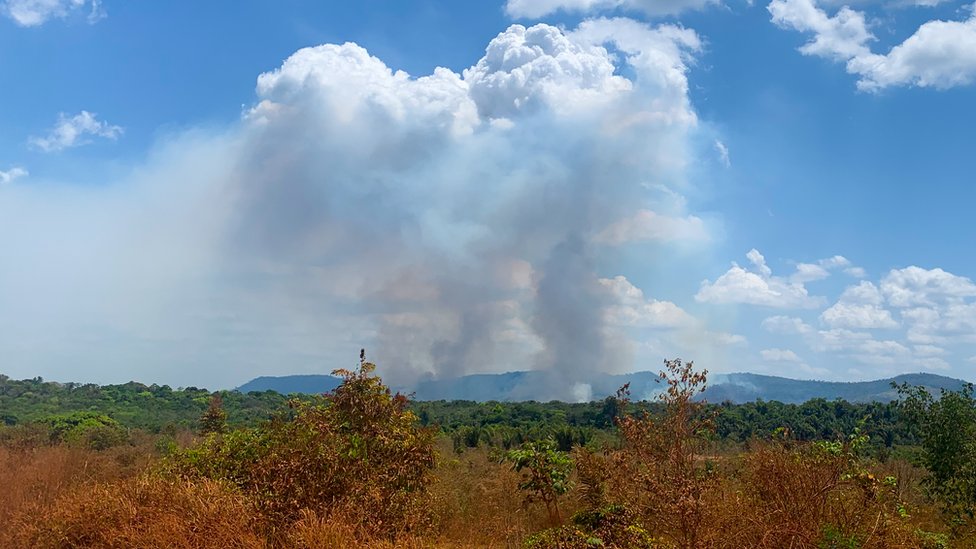
It is dry season in the Amazon and, once again, the forest is on fire.
Last year, Brazil’s biggest city, São Paulo, went dark because of the smoke. But while the smoke travelled far, the outrage travelled even further with European leaders criticising President Jair Bolsonaro for not doing enough to protect the rainforest.
The Brazilian government this year brought in some early measures to curb the number of fires. It imposed a 120-day ban on fires and deployed the army to badly-hit areas.
But, at the same time, President Bolsonaro has declared the fires a lie. His vice-president also told the BBC that the forest was not burning.
The statistics of course say otherwise. According to Brazil’s space agency INPE, the number of fires in the Amazon jumped 28% in July from a year ago. There is concern that August could show a similar rise.
São Félix do Xingú in the state of Pará is at the heart of the inferno. The area has become a deforestation hotspot in recent years.
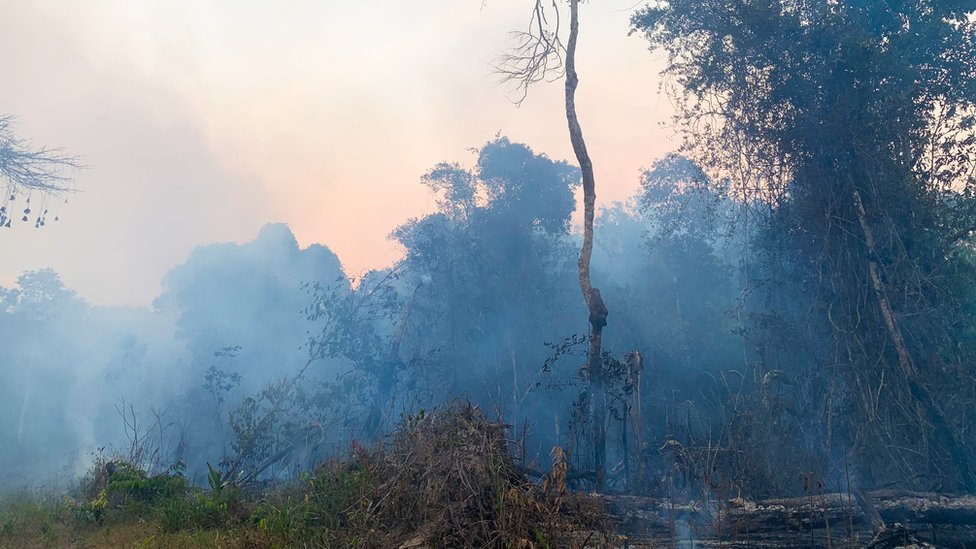
And as a result, it has also become a focal point for fires as often illegally-cleared land is then illegally burned too.
By day, the smoke drifts into the town and the smell of bonfire lingers in the air. By night, you can sometimes see the sky lit up by flames in the distance.
But the fires are not just killing the rainforest. They are also choking its people.
At São Félix do Xingú’s health centre, the medical team is working relentlessly. When the pandemic hit, it was turned into a Covid-only clinic.


The past six months have been intense for Dr Victorino Perez. He is the best chance for the town’s residents, who otherwise have to travel eight hours to the nearest intensive care bed.
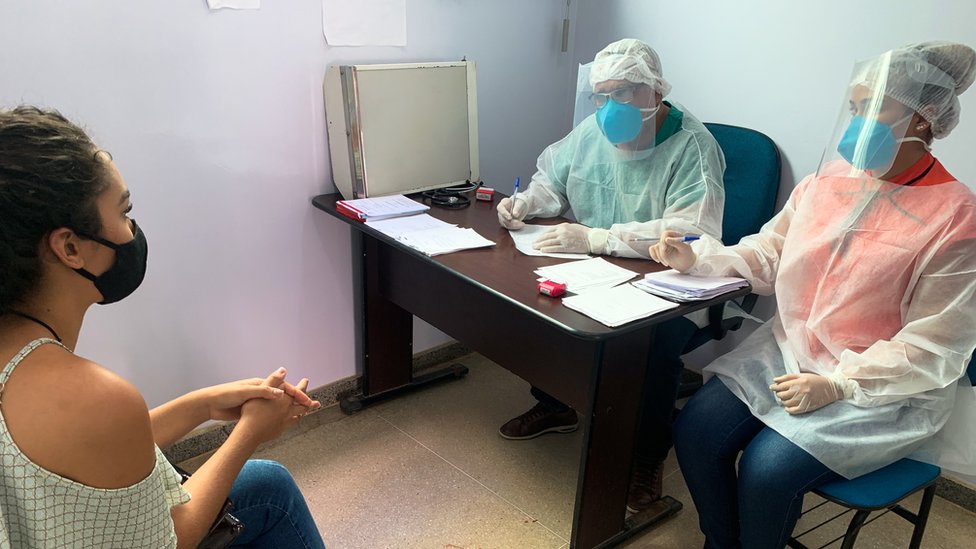
He says that the situation is not easing here, he is still seeing new cases every day. But now it is fire season, and the team has a new problem.
“Every day I have patients returning with breathing problems that are getting worse because of pollution and the fires in the area,” he says.
“With the virus, they just had a dry cough, an irritation, a shortness of breath. When they return, that’s got worse, they’re coughing more and we can see their lungs are more compromised,” Dr Perez explains.
According to a report by the Amazon Environmental Research Institute, Human Rights Watch and the Institute for Health Policy Studies, more than 2,000 people were taken to hospital last year because of breathing problems related to the fires.
The concern is that this year, yet more pressure will be heaped on some of the most scarcely resourced health centres in the country as they deal with both Covid-19 and the fires.
Eugenia Lima Silva is one of this year’s statistics. She was diagnosed with Covid-19 in April, the first person in São Félix do Xingú to catch the virus.
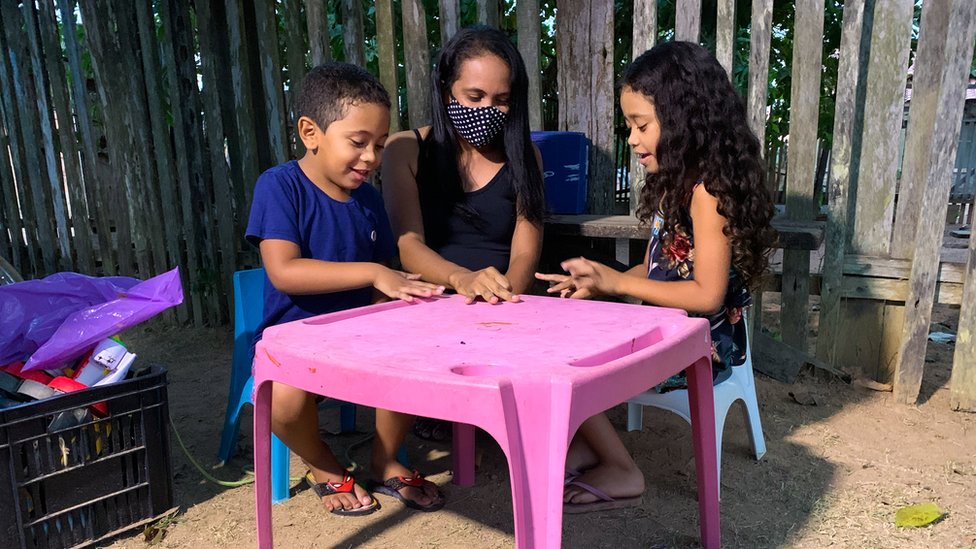
A mother of two children and just 27 years old, Ms Silva had no previous health issues but she was off work for three months.
“Sometimes I’m at a loss for words to explain just how difficult it was – I wouldn’t wish it upon anyone,” she says. For a while, she could not even hug her children as she isolated at home.
But her problems are not over. “Even today I have a shortness of breath when the weather’s very smoky or polluted like this. I can’t work as hard as I want, and I can’t stay out in the cold, I start to feel pain in my lungs, pain in my chest,” she says.
“It’s such a difficult time we are going through, that the whole of humanity is going through. If people put their hands on their hearts and thought ‘it could be me one day’, then they wouldn’t start fires like they do – they would wait for this all to pass so it doesn’t affect people here.”
Across town, another of the town’s doctors, Dr Lucas Antonio Silva, is on shift. He has just taken an emergency call – a woman who suspects she has Covid-19. She lives on the other side of the river and the only way to get there is a ferry and it has just left the riverside. The team has to wait an hour for it to return.
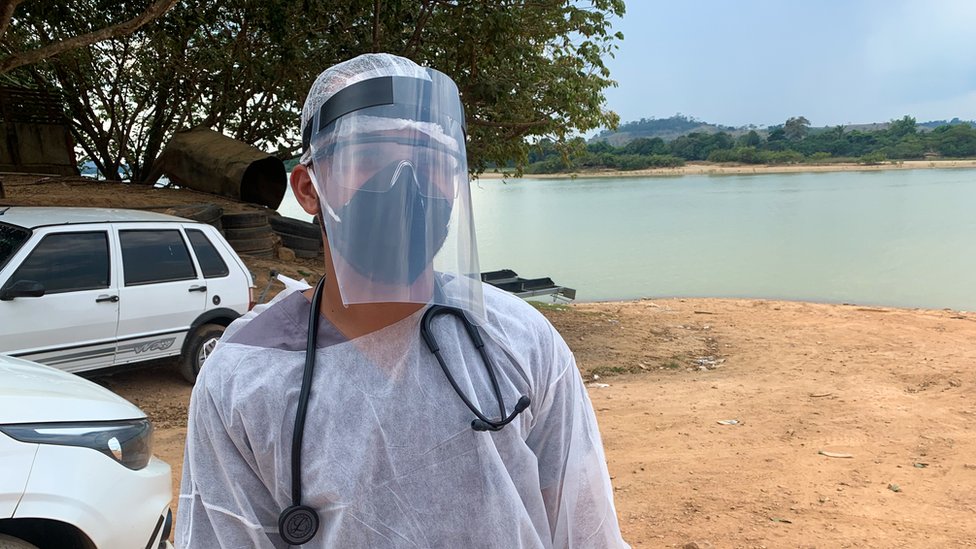
Dr Silva, who is in his early 20s, has been thrown in at the deep end. The day after he graduated in March, the World Health Organization declared a pandemic. He has been working on Covid-19 ever since.
When he eventually makes it over to the other side of the river, it is a short drive to reach 62-year old Odeli de Almeida. She has all the symptoms associated with the coronavirus and her son is currently in hospital with Covid-19.
The team tests her – but the result is negative.
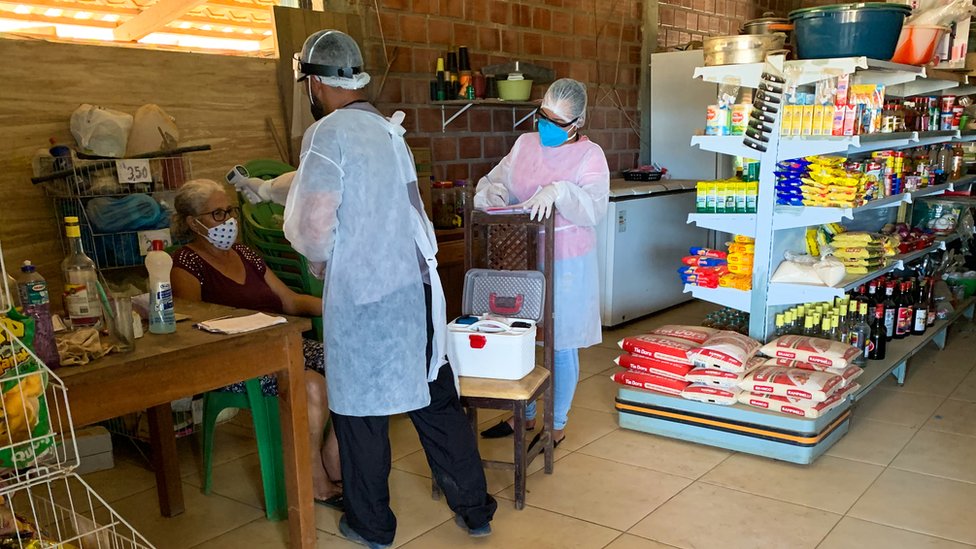
“It could be two things,” Dr Silva tells Ms Almeida. He suggests that perhaps not enough days have passed to do the test accurately.
In these parts of the Amazon, they only have access to rapid tests rather than the more reliable swab test. “Or perhaps you didn’t have Covid-19 and it could be a lung issue caused by the dust, the smoke, something else.”
Either way, he will continue to monitor her as if she had Covid-19.
While transmission rates are showing early signs of slowing across Brazil, the virus is still coursing its way through the deep interior of this massive country.
But the problems in the Amazon are bigger than just Covid-19 and they will not go away overnight – these communities are on the front line, living in the cross-hairs of both the virus and the fires.
Read MoreFeedzy


